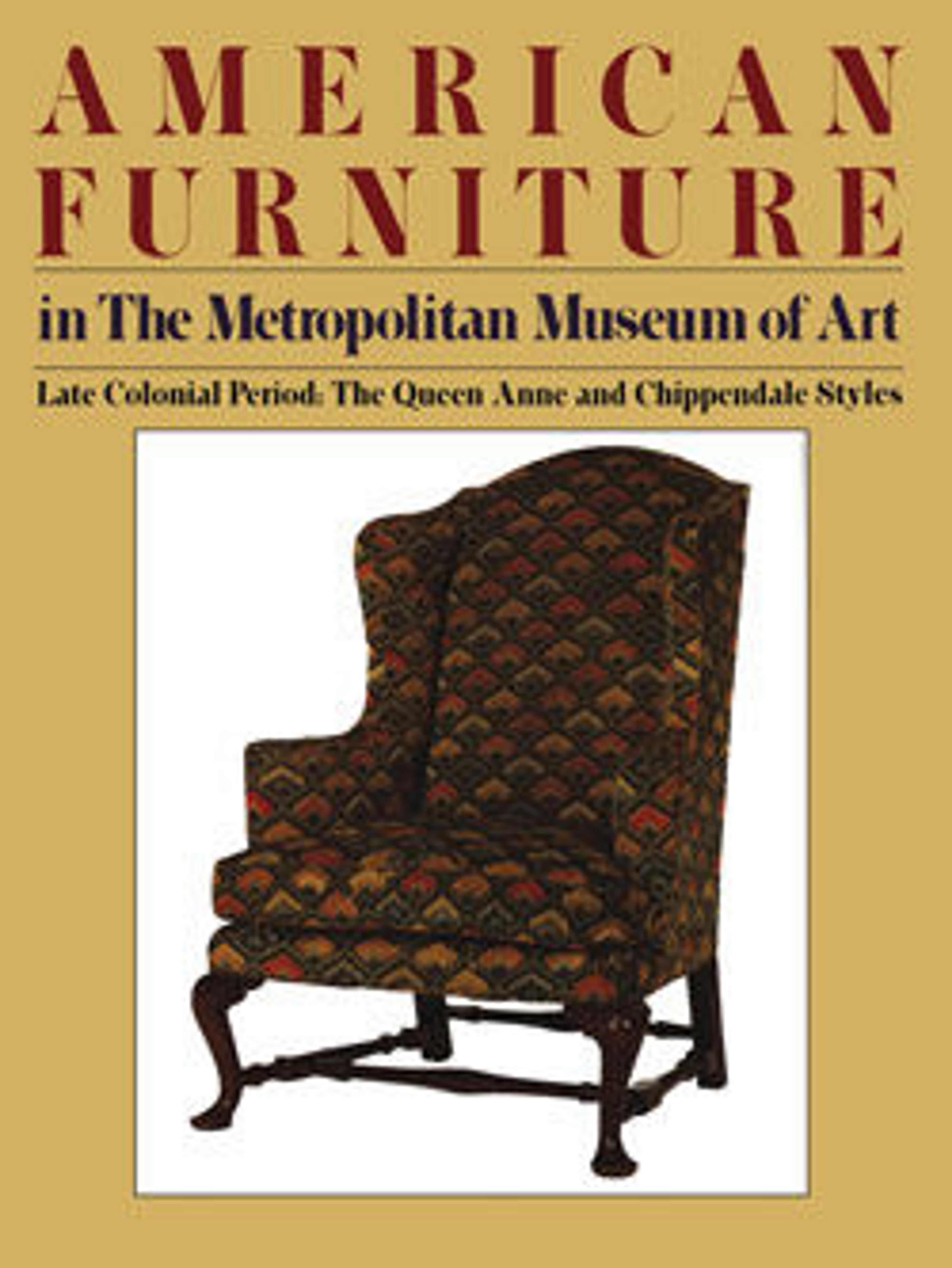High Chest of Drawers
Artwork Details
- Title:High Chest of Drawers
- Date:1730–50
- Geography:Probably from Maine or New Hampshire, United States
- Culture:American
- Medium:Walnut , white pine, burl walnut veneers, mahogany; brass
- Dimensions:86 3/4 x 40 1/4 x 20 1/4 in. (220.3 x 102.2 x 51.4 cm)
- Credit Line:Bequest of Cecile L. Mayer, 1962
- Object Number:62.171.12
- Curatorial Department: The American Wing
Audio
4013. High Chest And Dressing Table
LESLIE DOCKERAY: My first impression was, "Oh my gosh, it’s like a carnival top."
NARRATOR: It’s the whimsy of the details in this high chest, or “highboy,” that captivate Leslie Dockeray, a woodworker, conservator, and musician.
LESLIE DOCKERAY: Because the top is very elaborate, with inlaid stars, these curves and the big fan in the middle, that's unusual. That same shape is on the bottom in reverse, where you have that curve, and see the circles? Without the stars it’s not as brilliant and eye-catching. But the whole piece felt as one because of that.
NARRATOR: Several wood types adorn the drawers: light, gleaming maple; dark mahogany; and highly-textured burl walnut. These woods form neat bands and other patterns, like the intricate curls of burl wood around the arches on the topmost pair of drawers. This technique is called inlay, or marquetry.
LESLIE DOCKERAY: This is all small pieces of wood, very thin, that have been inlaid into channels that were cut into one solid piece.
NARRATOR: If you look closely, you’ll see how the patterns on the adjacent panels of wood mirror each other. That’s because they’re “book matched.”
LESLIE DOCKERAY: Most makers would want to have everything uniform. So when you have this book-matched piece, meaning that you have a piece of wood, you cut it straight down the middle, and then you open it up like a book so that it would be a mirror image of the pieces. And that's what you can see here on the drawers, that they are book-matched that show those marks on both sides.
NARRATOR: The design of this high chest is unique, so when experts recognized the same form and inlay patterns in another piece of furniture, it helped reunite the high chest and dressing table after decades of separation in different collections. They are on public view together here for the first time.
More Artwork
Research Resources
The Met provides unparalleled resources for research and welcomes an international community of students and scholars. The Met's Open Access API is where creators and researchers can connect to the The Met collection. Open Access data and public domain images are available for unrestricted commercial and noncommercial use without permission or fee.
To request images under copyright and other restrictions, please use this Image Request form.
Feedback
We continue to research and examine historical and cultural context for objects in The Met collection. If you have comments or questions about this object record, please contact us using the form below. The Museum looks forward to receiving your comments.
